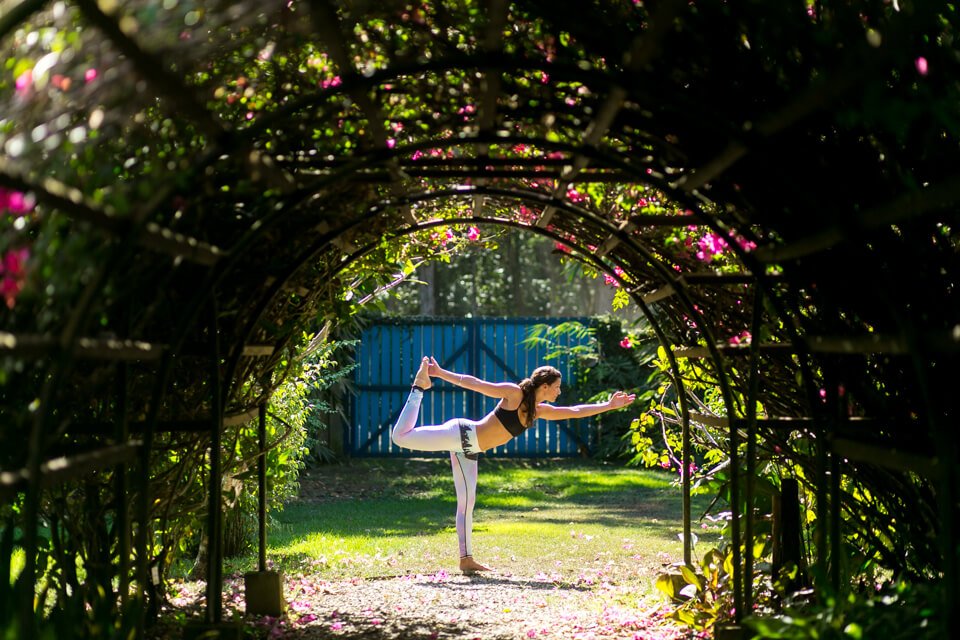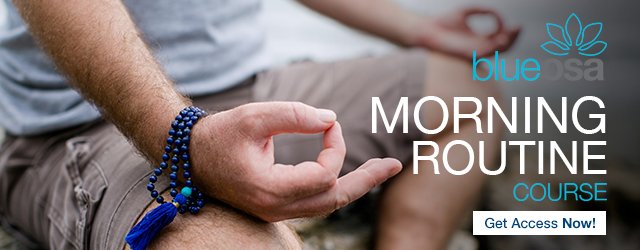Keeping with your yoga practice can be a bit of a challenge sometimes. Between life’s everyday commitments and obligations, it’s often an intense juggling act to maintain everyday life. There’s a lot of expectations we set for ourselves and that list of things to do just seems to be growing and growing.
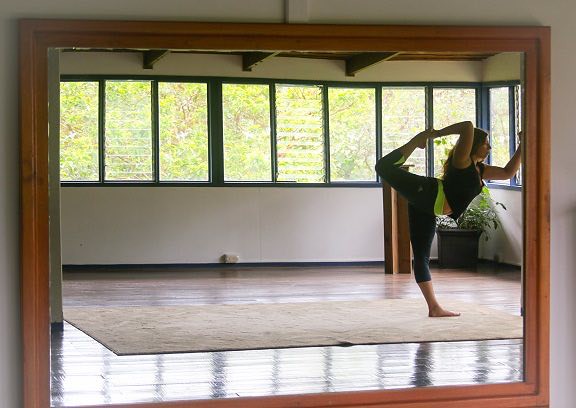
But sometimes life gets in the way and we don’t always have the luxury of going to a studio. Maybe the weather isn’t all that great or maybe the scheduling of a class conflicts with a doctor’s appointment. Whatever the excuse may be, it’s often easy to skip out on yoga entirely because we couldn’t make it to class.
So why not start practicing yoga at home? Starting a home practice is just that, a start. It doesn’t have to be super rigorous or demanding, but instead something accessible that will allow you to be consistent with your yoga practice. Because let’s face it, life does tend to get in the way sometimes, so why not anticipate those ‘curve balls’ that life throws at us and hit em’ dead on?
Be Consistent
Set a specific time every day that allows you the time and space to practice. Find where in your schedule you usually have a free pocket of time and transform that free time to “me” time.
Keeping a regular time will help to create consistency with your practice. It usually takes 3 weeks for a habit to form and stick, so being consistent with a time for at least 3 weeks will allow you to fall into the habit of practicing yoga at home.
Doing your practice should be done at the same time, every day, but that doesn’t mean the length of your practice has to be the same everyday. Committing to one time and sticking to that time, will allow your practice to become your own.
Find a Space
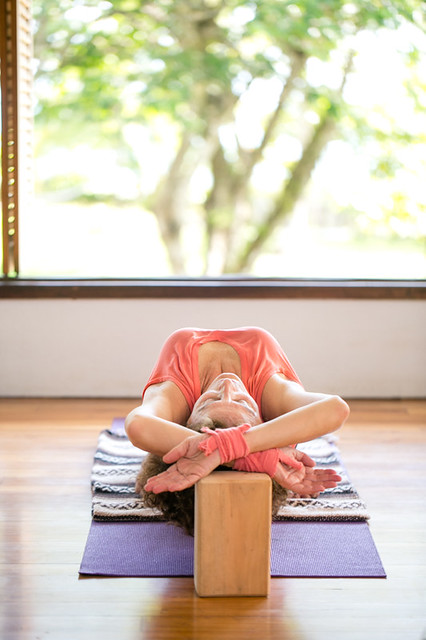
OK, now this doesn’t have to be a super-sacred space, but it should be inviting so that you want to be there. Whether that means transforming that storage room in your house into a yoga room or partitioning off another room in the house. Dedicate that space to yoga and your specific practice of yoga at home.
Gathering up some props to add to your space will also facilitate your at-home practice. Find a strap and a block, so that you feel fully supported in each pose. Using the props will also allow you to explore your limits in each pose.
Also, find some candles and incense, make a little altar and a get a bell or a Tibetan singing bowl, so that you can easily replicate what you experience in class.
Get on Your Mat
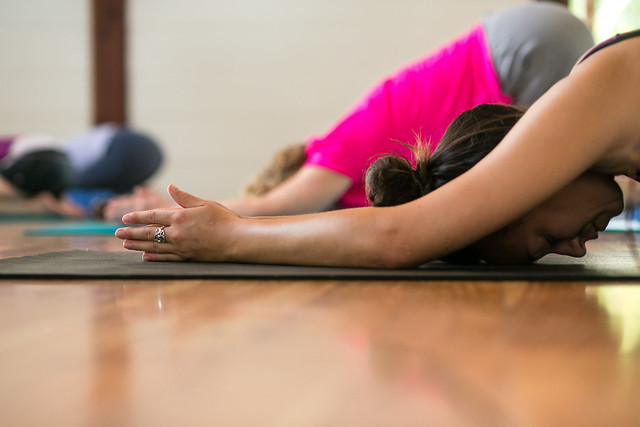
You’ve set a time and created a space, now it’s up to you to make your practice your own. When students come to me about setting up a home practice I always tell them to just get on the mat. It’s a bit like running, the hardest part is always lacing up your shoes and heading out the door. The same goes for yoga.
Once you’re on your mat, start to notice your breath. Start with simple breathing exercises, or some seated stretches, nothing too intense. Just getting used to your body and finding what feels good is an excellent start.
Warming up with sun salutations is another way to practice without having to think too much. Most classes throw in some sun salutations, so being able to practice these at home is an excellent start and a springboard for inspiration.
Use Online Resources
Do you feel like you’re stuck doing the same poses when you’re doing yoga at home? Do you always start and end your practice the same way? No need to. Use the Internet for inspiration. Either follow along with classes online (YouTube is a great place for free classes) or head over to Blue Osa’s Online Yoga Academy.
At YogaJournal they have a great breakdown of all the poses as well as helpful sequencing tips. A good suggestion is to write down the individual pose on one index card and then sort the cards to create a flow. This is a creative way to make your practice your own, without having to think too hard about it.
Keep It Fun and Lighthearted
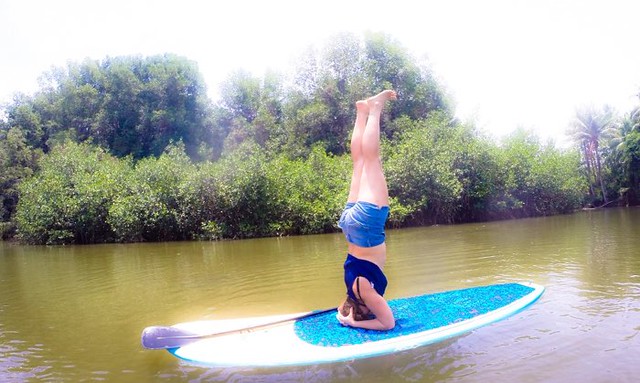
Having your own yoga practice is an incredible way to take your practice to the next level. Don’t be too demanding on yourself and remember to keep it fun. Incorporating music into your practice is a great way to liven it up and get things going. There are lots of great “yoga playlists” out there, or pick your favorite artist and develop a fun, flow-y sequence. The sky is the limit when you’re practicing at home.
It’s also a good idea to try different types of yoga to keep things fresh and exciting. Are you a hardcore Ashtanga practitioner? Why not try a yin practice to stretch out the connective tissue and work those tiny muscles? Maybe you’re more into a mild practice? Having Yoga Nidra be an accompaniment to that soft practice might be a fun way to add a little variety.
Also, explore! I know when I practice at home I work on those poses that are difficult for me in class. Headstand not quite where you want it? No problem! Kick your legs up the wall and do some fine tuning on those more difficult poses. Practicing yoga at home allows you to shed that ego and really focus on what YOU want to do.
Adding personal touches to your practice will allow you to experience yoga on a whole different level. Maybe you’ll fall in love with a new type of yoga or maybe it will reaffirm what you love about your practice now. Whatever it may be, it will help you stay on track when continuing with your own practice.
Having your own practice of yoga at home will make you more disciplined with your practice without being too rigid. Having this practice at home will allow you to grow deeper in your practice so that you can take the tools you learn on the mat, off the mat, wherever you may be.
About The Author

Tara DeAugustine is an elementary school teacher, presently taking a much-needed break from teaching, and in turn dabbling in and out of different job roles. Her travels have taken her all over the world, previously living in Thailand, Taiwan and Cambodia. Currently, she’s a volunteer writer and yoga instructor at Blue Osa Yoga Retreat & Spa in Costa Rica. When she’s not busy at work, you can find her doing what she loves, which is included but not limited to: lazing about in hammocks, eating salad, watching sunsets and reading.


